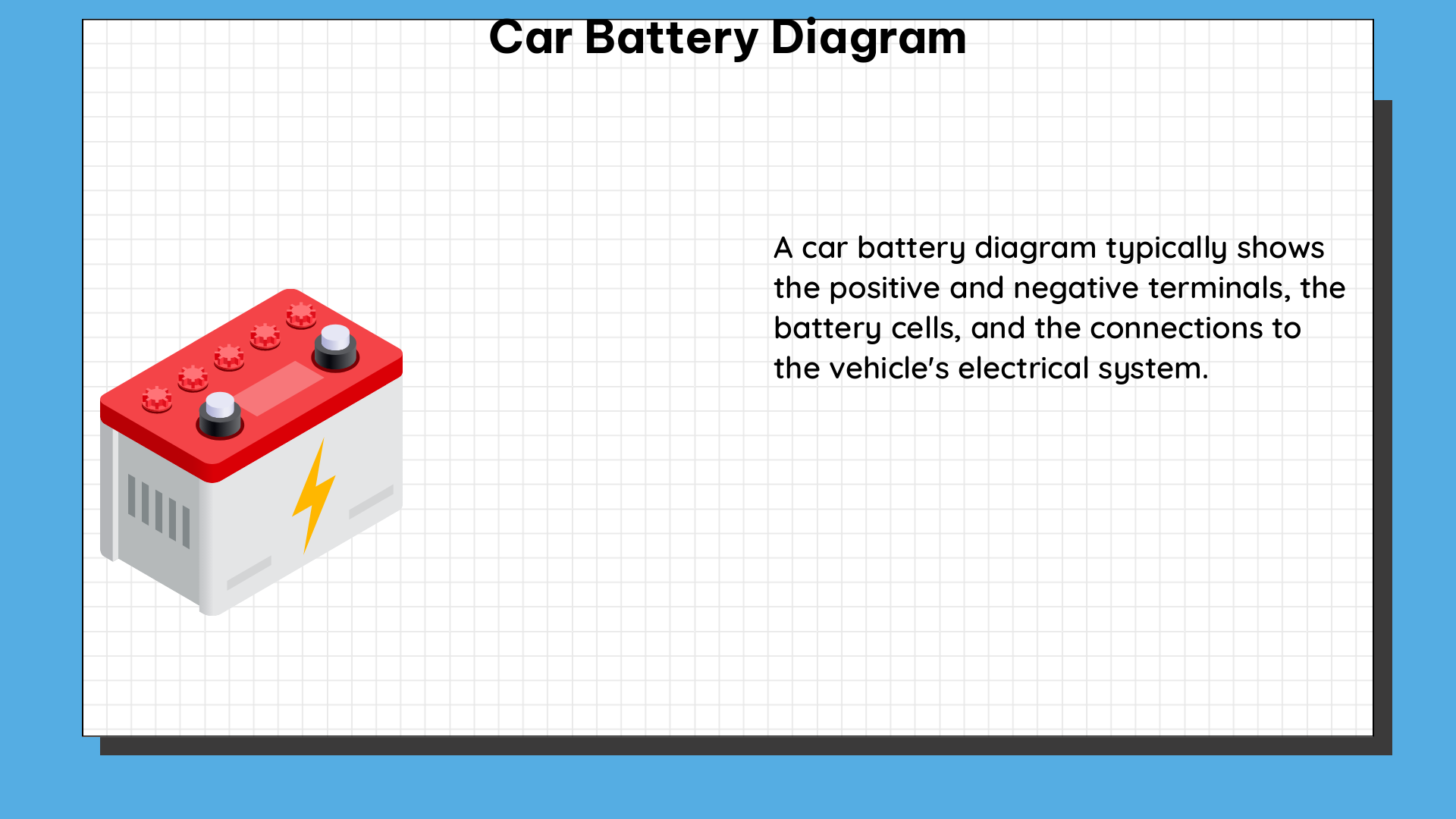The car battery diagram is a crucial component of any vehicle, providing the necessary power to start the engine and supply electricity to various electrical systems. Understanding the technical specifications of your car’s battery is essential for maintaining its performance and longevity. This comprehensive guide will delve into the intricate details of the car battery diagram, equipping you with the knowledge to ensure optimal performance and longevity.
Battery Capacity and Voltage
The battery’s capacity, measured in ampere-hours (Ah), indicates the amount of electrical charge it can deliver over a specific period. A typical car battery has a capacity ranging from 40 Ah to 100 Ah, depending on the vehicle’s make, model, and power requirements. The voltage, measured in volts (V), is the electrical pressure that drives the current through the circuit. Most car batteries operate at 12V, with some high-performance vehicles using 24V systems.
| Battery Capacity | Voltage |
|---|---|
| 40 Ah – 100 Ah | 12V |
| N/A | 24V |
Internal Resistance and Component Resistance

One critical aspect of the car battery diagram is its internal resistance, which affects the battery’s efficiency and performance. The internal resistance can be measured using a digital multimeter (DMM) or a source measure unit (SMU). A well-maintained car battery typically has an internal resistance of less than 50 milliohms (mΩ).
The resistance of the battery components, such as the cell tabs and busbars, can also be measured to ensure good quality welds and low resistance joints. Ideally, the component resistance should be less than 1 milliohm (mΩ) to maintain optimal power transfer and minimize energy losses.
| Component | Resistance |
|---|---|
| Internal | < 50 mΩ |
| Cell Tabs | < 1 mΩ |
| Busbars | < 1 mΩ |
Battery Performance Factors
The battery’s performance can be affected by various factors, including temperature, charge/discharge cycles, and aging. Extreme temperatures, both hot and cold, can significantly impact the battery’s capacity and lifespan. Proper temperature management, such as using a battery heater or cooling system, can help maintain optimal performance.
The number of charge/discharge cycles the battery undergoes also plays a crucial role in its longevity. Frequent deep discharges and rapid charging can accelerate the battery’s degradation, leading to a shorter lifespan. Implementing a balanced charging and discharging regime can help prolong the battery’s cycle life.
As the battery ages, its capacity and performance gradually decline. This degradation is influenced by factors such as the battery’s chemistry, manufacturing quality, and usage patterns. Regularly monitoring the battery’s state of health (SOH) can help identify potential issues and guide maintenance or replacement decisions.
Battery Testing and Maintenance
To ensure optimal performance and longevity, it is essential to perform regular testing and maintenance on the car battery diagram. This can include:
- Open-Circuit Voltage Testing: Measuring the battery’s open-circuit voltage (OCV) can provide insights into its state of charge and overall health.
- Environmental and Safety Testing: Using temperature datalogging, you can monitor the battery’s operating conditions and ensure it is within the recommended temperature range.
- Formation, Aging, and Battery Cycling: Performing controlled charge/discharge cycles can help assess the battery’s capacity, internal resistance, and degradation over time.
Regular maintenance tasks, such as cleaning the battery terminals, checking for corrosion, and ensuring proper tightness of connections, can also contribute to the battery’s long-term performance.
Advanced Modeling and Analytics
The car battery diagram’s capacity and cycle life can be estimated using machine learning algorithms and physics-based modeling. These models can analyze the battery parameters generated during over-the-air (OTA) technology and provide insights into the battery’s performance and degradation.
By leveraging data-driven diagnosis and prognosis techniques, you can gain a deeper understanding of your car battery’s behavior, predict its remaining useful life, and optimize maintenance strategies. This can help extend the battery’s lifespan and ensure reliable power delivery for your vehicle.
Conclusion
The car battery diagram is a complex system that requires careful consideration of its technical specifications, including capacity, voltage, internal resistance, and component resistance. Regular testing and maintenance, along with advanced modeling and analytics, can ensure optimal performance and longevity of your vehicle’s power source. By understanding the intricacies of the car battery diagram, you can take proactive steps to maintain the health and efficiency of your car’s electrical system.
References
- Lithium-ion battery data and where to find it – ScienceDirect.com
- Electric Vehicle Batteries: Status and Perspectives of Data-Driven Diagnosis and Prognosis
- EV Battery Testing | Tektronix
- Design and Analysis of a Battery for a Formula Electric Car ARCHrE; Massachusetts Institute of Technology.

The lambdageeks.com Core SME Team is a group of experienced subject matter experts from diverse scientific and technical fields including Physics, Chemistry, Technology,Electronics & Electrical Engineering, Automotive, Mechanical Engineering. Our team collaborates to create high-quality, well-researched articles on a wide range of science and technology topics for the lambdageeks.com website.
All Our Senior SME are having more than 7 Years of experience in the respective fields . They are either Working Industry Professionals or assocaited With different Universities. Refer Our Authors Page to get to know About our Core SMEs.